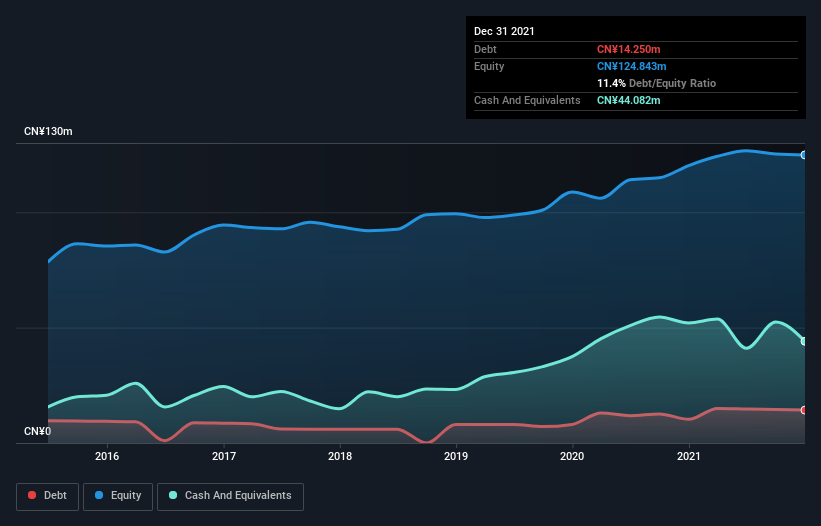Does Pearl River Holdings (CVE:PRH) Have A Healthy Balance Sheet?
Howard Marks put it nicely when he said that, rather than worrying about share price volatility, 'The possibility of permanent loss is the risk I worry about... and every practical investor I know worries about.' When we think about how risky a company is, we always like to look at its use of debt, since debt overload can lead to ruin. We can see that Pearl River Holdings Limited (CVE:PRH) does use debt in its business. But should shareholders be worried about its use of debt?
Why Does Debt Bring Risk?
Generally speaking, debt only becomes a real problem when a company can't easily pay it off, either by raising capital or with its own cash flow. Part and parcel of capitalism is the process of 'creative destruction' where failed businesses are mercilessly liquidated by their bankers. However, a more frequent (but still costly) occurrence is where a company must issue shares at bargain-basement prices, permanently diluting shareholders, just to shore up its balance sheet. Of course, debt can be an important tool in businesses, particularly capital heavy businesses. The first step when considering a company's debt levels is to consider its cash and debt together.
Check out our latest analysis for Pearl River Holdings
What Is Pearl River Holdings's Debt?
The image below, which you can click on for greater detail, shows that at December 2021 Pearl River Holdings had debt of CN¥14.3m, up from CN¥10.3m in one year. But it also has CN¥44.1m in cash to offset that, meaning it has CN¥29.8m net cash.
How Healthy Is Pearl River Holdings' Balance Sheet?
The latest balance sheet data shows that Pearl River Holdings had liabilities of CN¥57.6m due within a year, and liabilities of CN¥27.0m falling due after that. Offsetting these obligations, it had cash of CN¥44.1m as well as receivables valued at CN¥68.3m due within 12 months. So it can boast CN¥27.8m more liquid assets than total liabilities.
This excess liquidity is a great indication that Pearl River Holdings' balance sheet is almost as strong as Fort Knox. Having regard to this fact, we think its balance sheet is as strong as an ox. Simply put, the fact that Pearl River Holdings has more cash than debt is arguably a good indication that it can manage its debt safely.
Importantly, Pearl River Holdings's EBIT fell a jaw-dropping 34% in the last twelve months. If that earnings trend continues then paying off its debt will be about as easy as herding cats on to a roller coaster. There's no doubt that we learn most about debt from the balance sheet. But it is Pearl River Holdings's earnings that will influence how the balance sheet holds up in the future. So when considering debt, it's definitely worth looking at the earnings trend. Click here for an interactive snapshot.
But our final consideration is also important, because a company cannot pay debt with paper profits; it needs cold hard cash. While Pearl River Holdings has net cash on its balance sheet, it's still worth taking a look at its ability to convert earnings before interest and tax (EBIT) to free cash flow, to help us understand how quickly it is building (or eroding) that cash balance. During the last three years, Pearl River Holdings generated free cash flow amounting to a very robust 91% of its EBIT, more than we'd expect. That positions it well to pay down debt if desirable to do so.
Summing up
While it is always sensible to investigate a company's debt, in this case Pearl River Holdings has CN¥29.8m in net cash and a decent-looking balance sheet. And it impressed us with free cash flow of CN¥527k, being 91% of its EBIT. So we don't think Pearl River Holdings's use of debt is risky. The balance sheet is clearly the area to focus on when you are analysing debt. But ultimately, every company can contain risks that exist outside of the balance sheet. To that end, you should learn about the 3 warning signs we've spotted with Pearl River Holdings (including 2 which are potentially serious) .
When all is said and done, sometimes its easier to focus on companies that don't even need debt. Readers can access a list of growth stocks with zero net debt 100% free, right now.
Have feedback on this article? Concerned about the content? Get in touch with us directly. Alternatively, email editorial-team (at) simplywallst.com.
This article by Simply Wall St is general in nature. We provide commentary based on historical data and analyst forecasts only using an unbiased methodology and our articles are not intended to be financial advice. It does not constitute a recommendation to buy or sell any stock, and does not take account of your objectives, or your financial situation. We aim to bring you long-term focused analysis driven by fundamental data. Note that our analysis may not factor in the latest price-sensitive company announcements or qualitative material. Simply Wall St has no position in any stocks mentioned.

 Yahoo Finance
Yahoo Finance 
